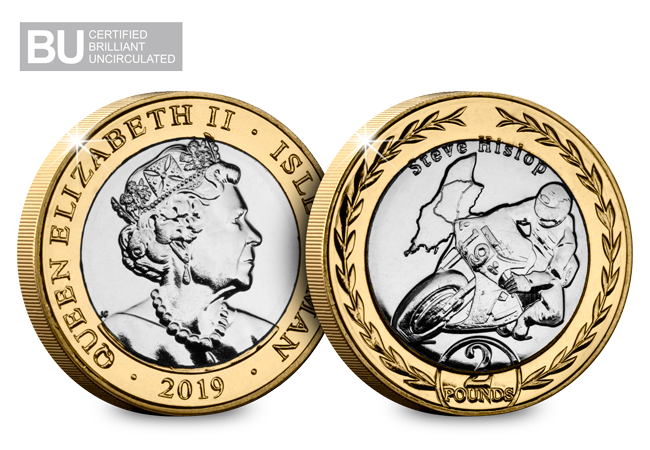Coin News
All you need is faith, trust and a little bit of pixie dust… And a Peter Pan 50p!
The wait is finally over and it is with great excitement that we can reveal the brand new Isle of Man Peter Pan 50p coins to you all…
These amazing coins have been developed in partnership with Great Ormond Street Hospital Children’s Charity to celebrate 90 years since Peter Pan author, J.M. Barrie, gifted all future rights in Peter Pan to them.
Our friends at the Westminster Collection say, “It has been an honour working with this fantastic charity to create the WORLD’S FIRST Peter Pan 50ps, and for every coin sold a donation will go directly to GOSH Charity to support the hospital’s most urgent needs: fund support services, pioneering research, equipment and refurbishment.”
Peter Pan remains one of the most cherished and loved children’s stories of all time and as such demand for these new 50p coins is expected to be extremely high.
Whether you’re an avid 50p collector, a Peter Pan fan, or just a big kid at heart, I’m sure these coins are bound to sweep you off your feet.
The Official Peter Pan 50p Coin

The brand new Peter Pan 50p features an engraving of David Wyatt’s illustration from the Oxford University Press edition of Peter Pan, alongside a well-known and much loved quote from the book.
This is the first time ever that Peter Pan has featured on a 50p coin and I’m sure that this magical design will go down a treat with collectors, especially following the popularity of previous book character coins.
The COMPLETE Peter Pan 50p Set

Six coins have been created in total, each featuring a different quote and an accompanying specially commissioned design showcasing one of David Wyatt’s stunning illustrations from the Oxford University Press edition of Peter Pan.
Each coin is dedicated to a favourite character from the book, including Peter Pan, Captain Hook, Tick-Tock the Crocodile, Tinkerbell, Wendy and Nana.
Whilst I’m sure you’ll agree each design is truly beautiful, my personal favourite has got to be Tinkerbell! Let me know in the comments below which design you prefer.
But these coins aren’t just available in Brilliant Uncirculated quality; they will in fact be available in a range of other finishes too…
The Silver Proof Peter Pan 50p Coins

Struck in Sterling Silver to an immaculate Proof Finish, these coins feature an impressive full-colour illustration of the stunning designs, really bringing the magic of the story to life.
Silver Proof 50p’s are amongst the most sought-after new issues around and with JUST 10,000 of the individual Peter Pan Silver Proof 50p and JUST 1,995 of the Silver Proof set available worldwide, a sell-out is expected.
The Gold Proof Peter Pan 50p

This is the crème de la crème of the range you could say…
Struck from 22 Carat Gold to a perfect Proof Finish, JUST 500 lucky collectors worldwide will be able to own this prestigious new coin.
New Gold Proof 50p’s have a strong sell-out history and high demand is expected for the Gold Proof Peter Pan 50p.
The British Isles really have had some fantastic releases recently and I must say that these coins from the Isle of Man have got to be some of my favourites! But what do you think about these coins? Let us know in the comments below!
Add the 2019 Peter Pan 50p coins to your collection!
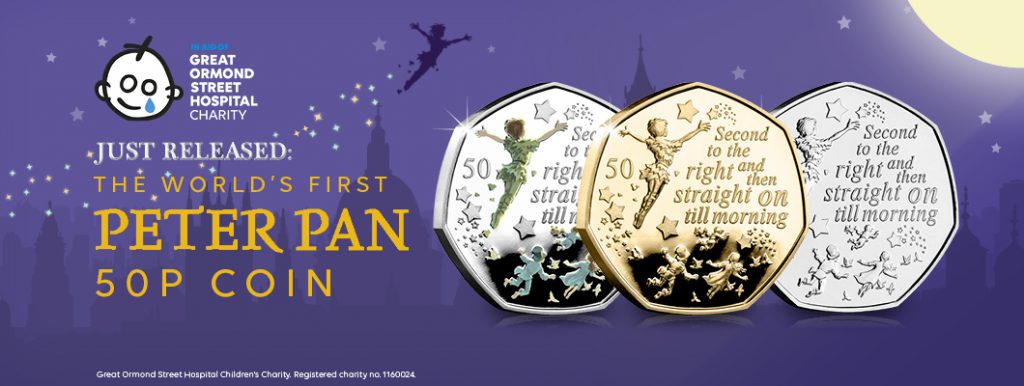
These beautiful new coins are now available to add to your British Isles collection, starting from £6.25 for the individual Peter Pan coin in Brilliant Uncirculated quality and £37.50 for the Brilliant Uncirculated set.
If you’d like to take a piece of magic home with you, click here to order your Peter Pan 50p coins.
The five 50p coins RE-ISSUED to celebrate British Military History
As many collectors will know, 2019 marks the 50th Anniversary of the 50p coin.
Since its issue in 1969, the world’s first seven-sided coin has become a huge favourite with collectors and has served as a canvas to commemorate some of the most iconic moments in British Military history.
As we mark a milestone year for this iconic coin, The Royal Mint’s celebration continues as they reissue five of the most important 50p coins celebrating British Military history!
These five 50p coins, pieced together for the first time, mark a rare milestone moment for British Coinage. Not to mention the set also includes the 1994 D-Day 50p re-issued in the NEW 50p specifications for the first time ever!
Earlier in the year, the Base Proof, Silver Proof and Gold Proof British Culture 50p sets sold-out within just TWO HOURS of going on sale. The Brilliant Uncirculated set released just a short while later also saw an overwhelming response from collectors.
Find out the story of each of the coins featured in the British Military 50p Set below…
Victoria Cross Medal 50p

The Victoria Cross is the highest award for gallantry that a British serviceman can achieve. A recommendation for the Victoria Cross is normally issued by an officer at regimental level and has to be supported by three witnesses.
This coin was originally issued in 2006 to mark the 150th Anniversary of the Victoria Cross.
Depicting the obverse and reverse of a Victoria Cross medal, the design by Claire Aldridge carefully details the Cross pattée with a crown and Lion as on the medal itself.
Victoria Cross Soldier 50p

The Victoria Cross Award was introduced in 1856 by Queen Victoria to honour acts of the Crimean War.
Since then, two-thirds of all awards won have been presented by the British Monarch at investitures which are usually held at Buckingham Palace.
To date, the medal has been awarded 1,358 times. A large number of these were awarded during the World Wars: 634 in World War One and 182 awarded in World War Two.
Initially issued in 2006 to mark 150 years of the Victoria Cross Award, this coin features a soldier carrying a wounded comrade with an outline of the Victoria Cross as designed by Clive Duncan.
Battle of Hastings 50p

The Battle of Hastings was fought on the 14th of October 1066 between the French Army, led by Duke William II, and the English Army led by King Harold.
King Harold was eventually defeated by William who then became known as William the Conqueror; he was crowned the first Norman King of Great Britain.
Issued in 2016 to mark 950 years since this legendary battle, the reverse design of this 50p by John Bergdahl was inspired by the Bayeux Tapestry.
Battle of Britain 50p

The Battle of Britain was an intense air battle fought mainly throughout the summer of 1940 between Germany and Britain.
The name for the conflict was derived from a Winston Churchill speech in which he said “The Battle of France is over. I expect the Battle of Britain is about to begin.”
Marking the 70th Anniversary of the Battle of Britain this coin was first issued in 2015. The reverse design, by Gary Breeze, depicts three airmen running to their planes with enemy aircraft overhead.
D-Day Landings 50p

On 6th June 1944 a mighty alliance of British, American and Commonwealth armed forces crossed from England to Normandy and began assault on German forces.
It was the largest seaborne invasion in history and began the liberation of German-occupied France, laying the foundations for the Allied victory of World War Two.
A timeless tribute to the thousands of Allied troops who fought tirelessly in the War, this 50p coin was issued in 1994 to commemorate 50 years since D-Day.
Originally struck as a large 50p in the pre-1997 specifications this is the first time ever this D-Day 50p coin has been issued in the new 50p dimensions!
The reverse of the coin was designed by John Mills and represents the D-Day Landings with the Allied invasion force heading for Normandy filling the sea and sky.
We are very excited to see these coins being re-issued as a complete set for the first time – especially the 1994 D-Day 50p in the new specifications!
Following the popularity of the re-issued British Culture 50p set earlier in the year, we expect this set to be equally as sought-after.
What coin are you most looking forward to seeing?
Secure your 50th Anniversary of the 50p Military CERTIFIED BU Set
Own the BRAND NEW 50th Anniversary of the 50p Military Set for JUST £22.50 (+ p&p).
In poll position for 2019 – brand new Isle of Man TT £2 coins released!
Last year, two Isle of Man £2 coins were released for the special anniversary year of the Isle of Man Tourist Trophy, and now that the legendary races are in full swing, I’m sure you’ll be just as excited as I am to hear that two brand new TT £2 coins have been issued for 2019!
These coins are particularly special, as they mark 112 years since the first TT race in 1907 and the 100th race which will take place this year, due to no races being held during war time.

The reverse designs feature legendary rider, Steve Hislop racing the Tourist Trophy track.
The obverse features Jody Clark’s new portrait of HRH Queen Elizabeth II as seen on last year’s TT £2s and you might notice that this portrait looks quite different to UK coins, as the Queen’s shoulders are present in the design.
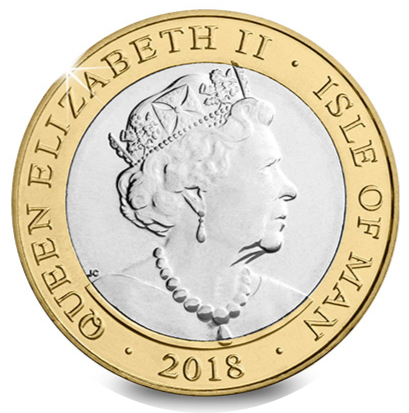
Commemorating racing hero, Steve ‘Hizzy’ Hislop
These coins celebrate Steve ‘Hizzy’ Hislop, 11 time winner of the notorious Tourist Trophy races.
Known by motoring enthusiasts world-wide as the ultimate road race, the 37.73 mile monster course takes place each year across the winding public roads on the Isle of Man.
In 1989 Hizzy rode into the history books as the first rider to lap at over 120mph! The 30th anniversary of this epic achievement has now been commemorated with two brand new coins that will enter circulation on the Isle of Man.
Hislop’s first win was in 1987, although he really stole the show in 1989 and 1991, winning three races in a week! His extraordinary racing career has cemented him as a hero of the TT mountain circuit.

Isle of Man TT numismatic history
Since the first Isle of Man TT coins were issued in 1981, they have proved incredibly popular amongst collectors and motoring enthusiasts alike, with some selling for over £700 on eBay!
The first Isle of Man TT coin was a 50p which featured famous motorcyclist Joey Dunlop and only 5,000 coins of this design were struck.

A new TT 50p has been released most years since 1981 by the Isle of Man, however commemorative £2, £5 and Crown coins have also been issued to mark the event, which just goes to show how important and incredibly popular the TT races are.
Last year the Isle of Man release two £2 coins commemorating racing legend Mike Hailwood’s 60th year since his first TT race and 40th year since his triumphant return.
Just 3,000 of each coin entered circulation on the Isle of Man and we saw unprecedented demand from collectors looking to add the coins to their British Isles collection.
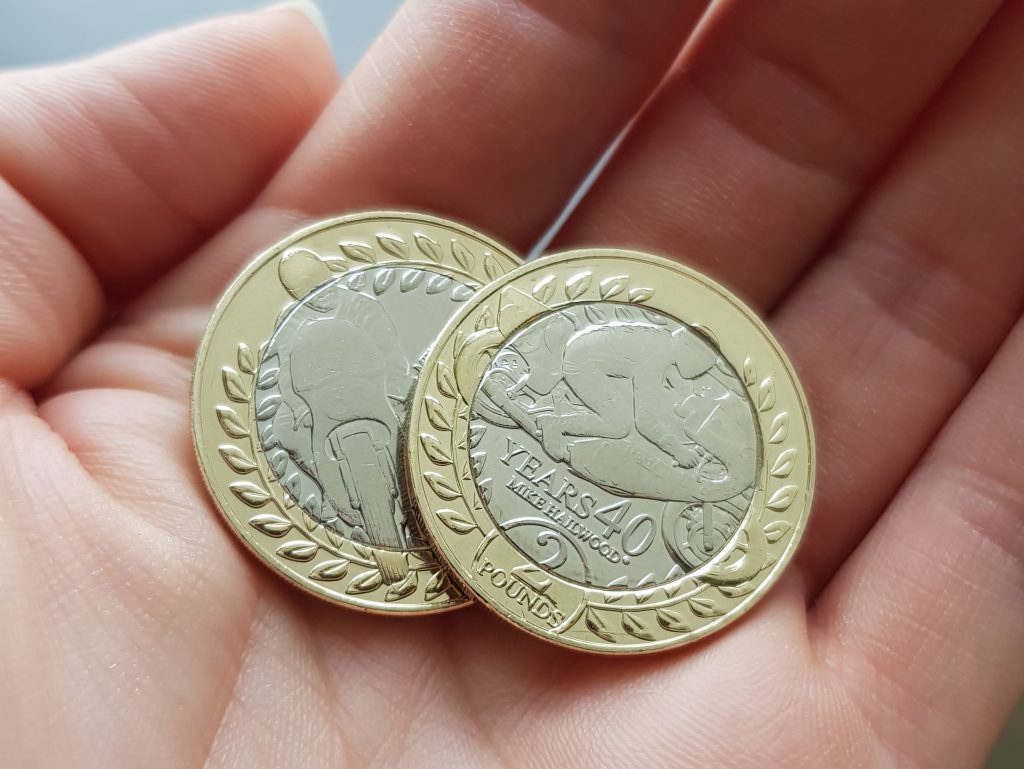
In 2017 a special commemorative £5 coin was issued to celebrate 110 years of the TT. This coin featured the Roman God, Mercury, the Winged God of the Messengers.
Unusually, the coin was re-struck and re-dated in 2018, specially for collectors.
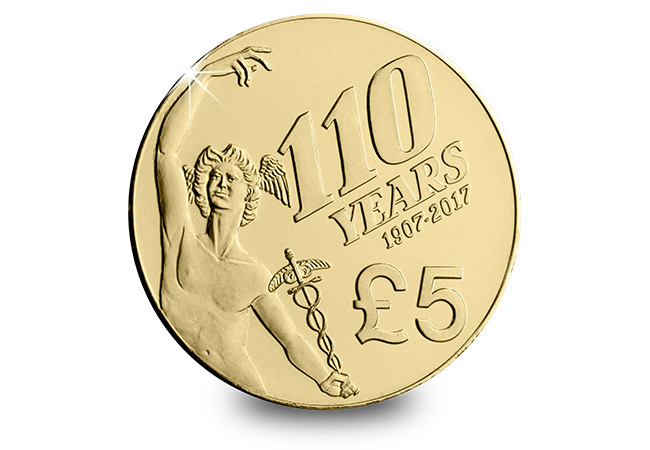
Another Isle of Man £2 coin to grip the attention of collectors isn’t actually another TT themed coin, but features three old-style cars racing and was issued in 1998 to celebrate the annual Rally, formerly known as the Manx Trophy Rally.
As with all Isle of Man coins, this coin isn’t actually legal tender in the UK, however we were lucky enough to come across this coin in our £2 coin hunt, which just goes to show why you should always be checking your change, as you never know which rare and interesting coins might turn up.
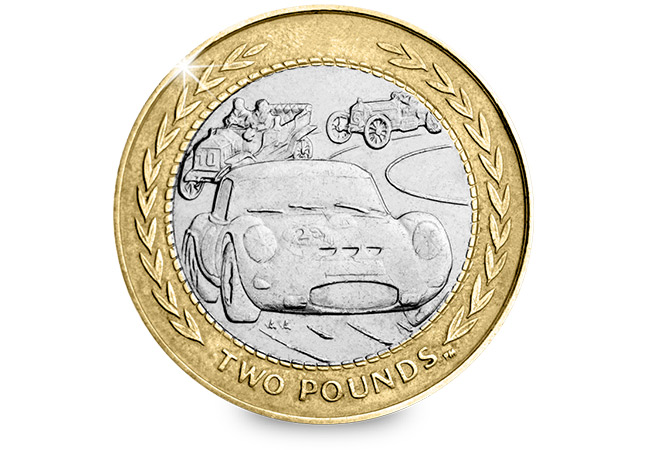
Due to the popularity of the previous motor racing themed coins, we expect that the brand new Isle of Man TT £2 coins featuring Steve Hislop will be very sought-after by collectors.
And, with just 15,000 of each design initially entering circulation on the Isle of Man, Isle of Man based Change Checkers are sure to become the envy of collectors everywhere!
Own both Isle of Man TT £2 coins!
Own the Isle of Man TT £2 coin duo in Brilliant Uncirculated condition.
Don’t miss out on this opportunity to secure your Isle of Man TT £2 Coin Duo. Click here to secure yours.


